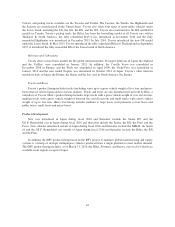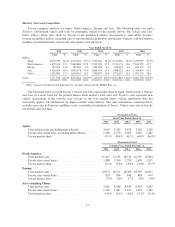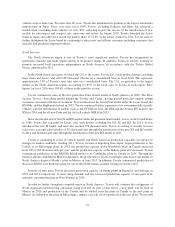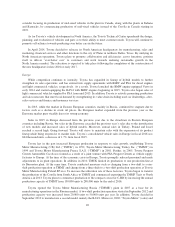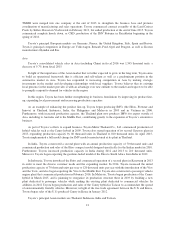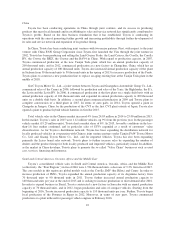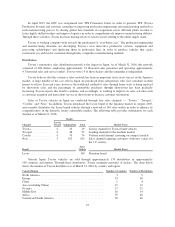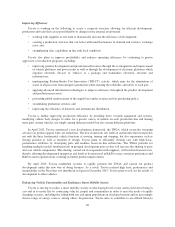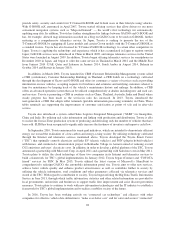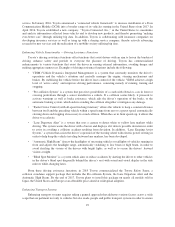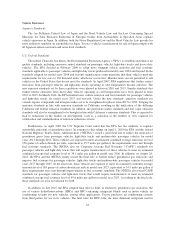Toyota 2015 Annual Report Download - page 31
Download and view the complete annual report
Please find page 31 of the 2015 Toyota annual report below. You can navigate through the pages in the report by either clicking on the pages listed below, or by using the keyword search tool below to find specific information within the annual report.Improving Efficiency
Toyota is working on the following to create a corporate structure allowing for efficient development,
production and sales that can respond flexibly to changes in the external environment:
• working with suppliers as one team to dramatically increase the efficiency of development;
• creating a production structure that can better withstand fluctuations in demand and currency exchange
rates; and
• strengthening sales capabilities in line with local conditions.
Toyota also plans to improve profitability and enhance operating efficiency by continuing to pursue
aggressive cost reduction programs, including:
• improving product development and production efficiencies through the re-integration and improvement
of vehicle platforms and power trains as well as through the development of electronic platforms which
organize electronic devices of vehicles as a package and standardize electronic structure and
infrastructure;
• implementing Ryohin-Renka Cost Innovation (“RR-CI”) activity, which aims for the elimination of
waste in all processes from design to production while ensuring the reliability and safety of each part;
• applying advanced information technologies to improve efficiency throughout the product development
and production processes;
• promoting global reinforcement of the supply base under an open and fair purchasing policy;
• streamlining production systems; and
• improving the efficiency of domestic and international distribution.
Toyota is further improving production efficiency by installing more versatile equipment and systems,
modifying vehicle body designs to allow for a greater variety of models on each production line and sharing
more parts among vehicles, not simply among different models but also among different platforms.
In April 2012, Toyota announced a new development framework, the TNGA, which reconciles sweeping
advances in product appeal with cost reductions. The new framework sets forth an architecture that incorporates
not only the three fundamental vehicle functions of moving, turning and stopping, but also ergonomics such as
driving position as well as freedom of design. Toyota plans to efficiently develop cars with high basic-
performance attributes by developing parts and modules based on this architecture. The TNGA provides for
handling multiple models simultaneously in grouped development projects that will increase the sharing of parts
and core vehicle components. This sharing, carried out in cooperation with suppliers, will result in lowered costs,
thereby allowing developmental manpower and funds to be reinvested in R&D to meet consumer preferences and
R&D to meet regional needs, resulting in further product improvement.
By April 2013, Toyota established systems to rapidly promote the TNGA and carried out product
development under this new way of doing business. As a result, Toyota realized high basic performance and
marketability in the Prius that was introduced in Japan in December 2015. Toyota plans to roll out the results of
development to other vehicles.
Enhancing Vehicle Functionality and Realizing a Smart Mobility Society
Toyota is striving to realize a smart mobility society in which people feel at ease and excited about being in
cars and in everyday life by connecting vehicles, people and communities in order to meet the needs of rapidly
changing societies, including the falling birth rate and aging populations in developed nations and an increasingly
diverse range of energy sources, among others. In particular, Toyota aims to contribute to an affluent lifestyle
26


